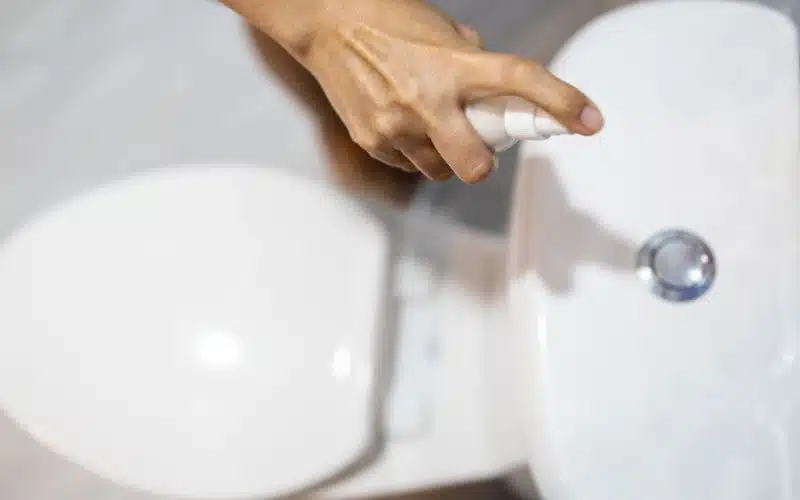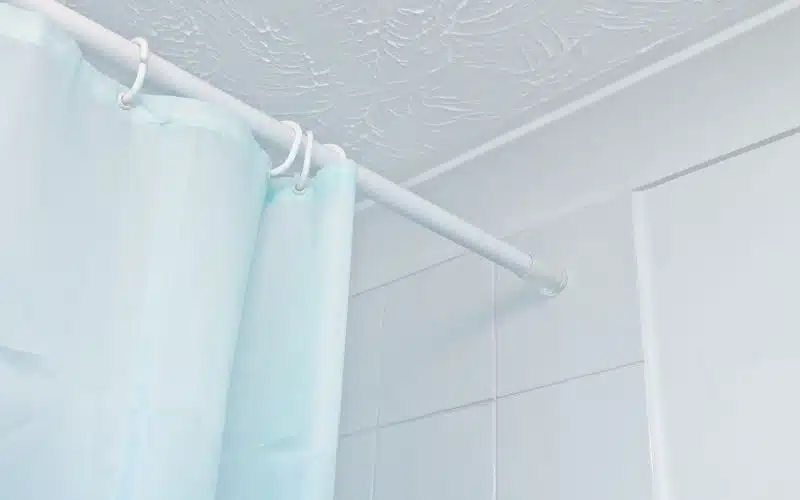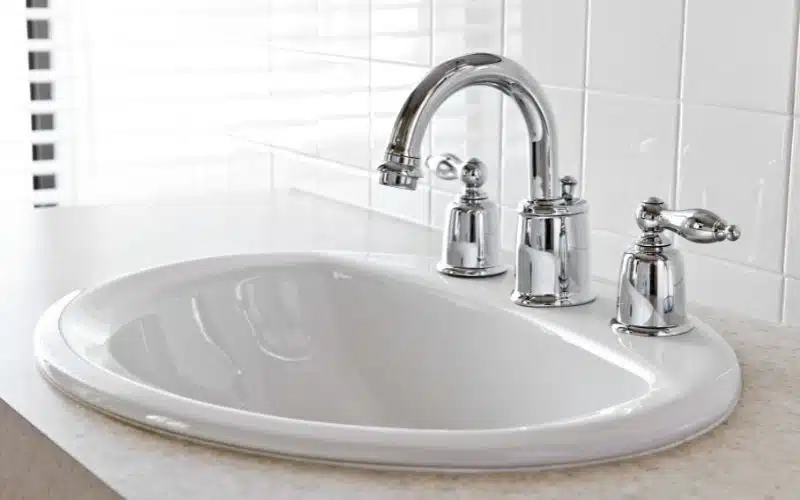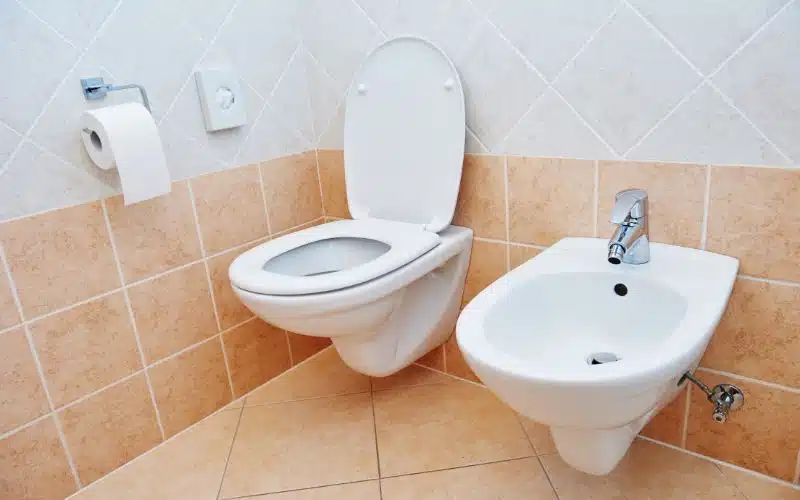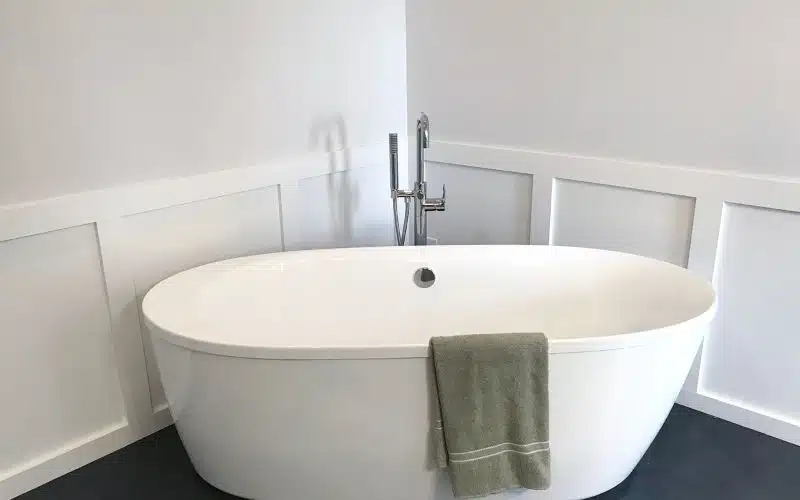Hot water running in the house is a luxury that not everyone can afford. However, it’s mandatory to access hot water in regions that experience extremely cold weather conditions.
So, when there is a problem with the hot water supply, it becomes an issue, especially in the bathroom.
The bathroom is the most frequently used part of the house aside from the kitchen and needs a constant water supply.
What if hot water runs uninterrupted in other house parts, including the kitchen, and not in the bathroom? What may be the cause, and how can you fix this problem?
There is nothing to do with the house’s supply when hot water runs in the kitchen and not the bathroom. But, first, there might be a problem with the faucet’s anti-scald device. In addition, the shower’s mixing valve might also be faulty or clogged with mineral deposits because of hard water.
Hot Water In Kitchen But Not Bathroom?
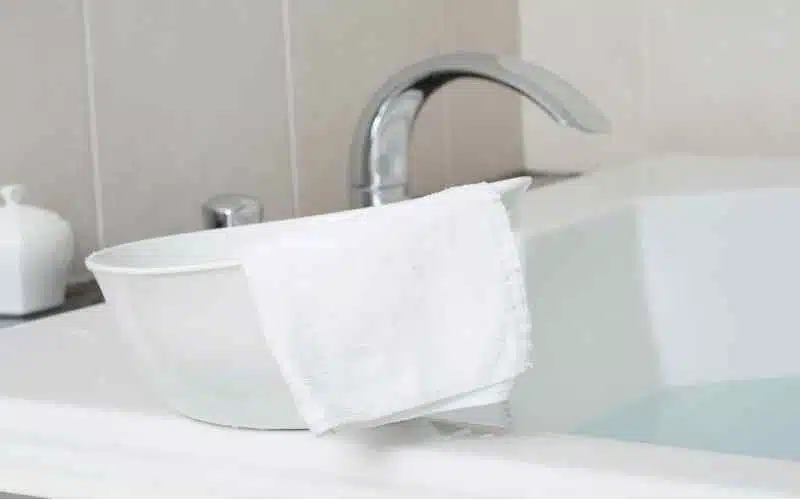
It might be alarming to turn on the shower on a cold morning and get hit with cold water spray.
But, on the other hand, before you think that your house’s water supply is faulty, you should first consider the following reasons.
#1. Faulty Mixing Valve
The mixing valve is directly connected to the bathroom’s faucet, allowing cold and hot water to mix in the right proportion.
For every bathroom’s faucet, the mixer valve regulates the entrance of the mixture of cold-hot water ratio.
The plumber sets it to a particular degree that allows appropriate temperature for use without getting burnt.
But, of course, if you notice that the hot water isn’t hot enough, it’s most likely a faulty mixer valve.
On the other hand, if the hot water doesn’t stay hot for too long, we might still suspect the mixer valve.
#2. Damaged Anti-scald Device
An anti-scald device is not present in every shower faucet. Some may or may not have the anti-scald device depending on the brand.
It is a plastic device just behind the showerhead which regulates the hot water’s temperature so that it doesn’t get too hot.
So, when it becomes faulty, it keeps the water cold and unable to heat up properly.
This coldwater problem often arises when the anti-scald device is set too high and restricts the hot water from entering the shower.
#3. Clogged Faucet
Mineral deposits are not an uncommon problem regarding the hot water supply in the bathroom. This deposit results from hard water components like; scum and other magnesium carbonates.
Prolonged buildup leads to a clogged faucet, making it impossible to enter hot water.
If your plumbing is old and worn, hot water interruptions may not be strange. If you have a hot water supply issue, the first thing to mind is checking for mineral deposits.
Perhaps, you might be lucky to find out that it may be the offender.
#4. Low Water Pressure
When the water pressure is low, this indicates a leakage somewhere. Therefore, if the water pressure is low, there might not be enough force to supply hot water.
So, lookout for any signs of leakage, especially at the hot water or heater pipes.
#5. Faulty Hot Water Heater
If a heating component is damaged, there will undoubtedly be a decline in the hot water supply. A water heater is the system responsible for heating water and supplying it.
Consequently, if there’s any fault in the heating components, either due to corrosion or prolonged use, it should be changed.
In some cases, you might have to change the entire heater in some cases, while you need to replace a part in others.
Whichever it is, ensure to carry out a replacement to restore a smooth hot water supply.
How To Fix The Hot Water Problem?
We have gone through possible reasons why hot water runs in the kitchen and not the bathroom. Now, let’s see how we can solve the problem.
First, we will discuss the solution for each problem above.
#1. How To Fix a Faulty Mixer Valve
To fix a faulty mixer valve, you must call a professional plumber for help. However, if you insist on fixing it yourself, you must have a little plumbing knowledge.
It’s either that or you’re quick to learn unless you permanently damage the shower mixing valve.
Below are the steps to fixing a faulty mixer valve.
- First, turn off the bathroom’s water supply valve in the opposite direction. This action will enable you to work without getting doused with water.
- Then, with a wrench or screwdriver, dismantle the shower completely before accessing the mixer valve behind.
- Next, If you can access the mixer valve, check for any signs of damage. If the valve is such that cold water enters more than the hot water, adjust the valve. After the adjustment, you can switch on the water to check if it’s set to your desired temperature.
#2. How To Fix a Damaged Anti-scald Device
- First, turn off the spigot handle beneath the shower faucet.
- Next, disassemble the showerhead, and you can see the anti-scald device. If it’s turned far to the right, which makes it more effective, using a wrench, adjust it.
- Finally, turn on the spigot handle and check if the temperature is suitable.
#3. How To Fix a Clogged Faucet
The first thing to know about a clogged faucet is to remove the particles. Once you remove the mineral deposits, you have your tap running.
#4. How To Fix Low Water Pressure
Having established that low water pressure is from a leakage, it would be best to locate it. First, ensure to check all kitchen and bathroom faucets, including the kitchen sink.
Also, you can measure the houses’ water pressure to see if it’s below the standard of 20- 120 Pounds per square inch (PSI).
Measure with a pressure gauge to determine where the problem is from. If the house’s water supply pressure is fine, then proceed to check the bathrooms’.
You might discover that the problem is your bathroom’s plumbing.
#5. How To Fix Faulty Hot Water Heater
For a faulty water heater, either you replace the entire heater or fix the damaged part. It’s advisable to seek help to don’t damage a perfectly working water heater.
Summary
Hot water in the kitchen but not the bathroom is a problem that you can fix easily. Locate the source of the problem and carry out repairs or replacements to get hot water coming.
However, it’s advisable to leave such sensitive issues to a professional as they might be tricky to repair.
